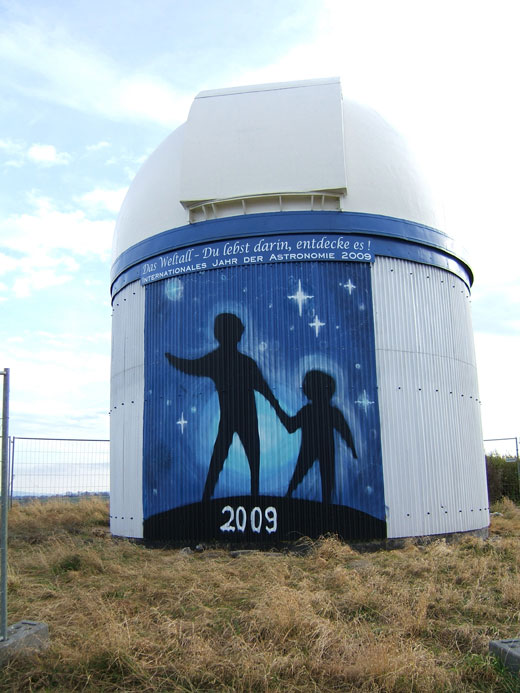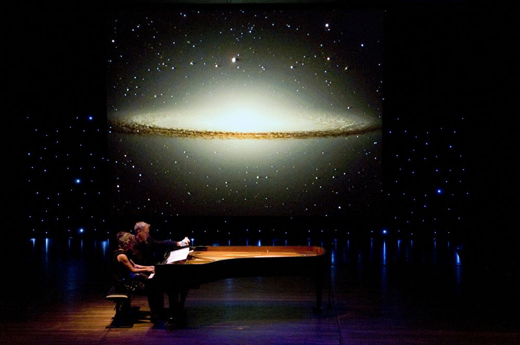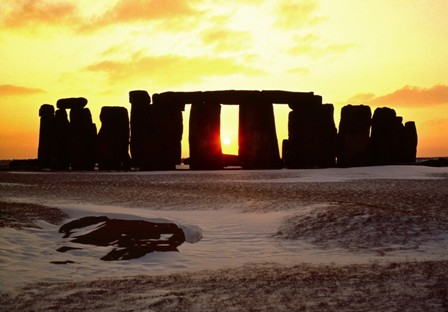IYA2009 Updates
Science and the Public 2010
16 December 2009
Call for Papers: Science and the Public 2010
Imperial College, London
3rd and 4th of July 2010.
Now in its fifth year, the Science and the Public conference aims to bring together the various strands of academia which consider science’s relationships with groups generally called ‘the public’.
Delegates come from a wide range of disciplines: science and technology studies, history of science, geography, psychology, cultural studies, media studies, sociology, development studies, English literature, science policy studies and more.
The range of topics covered may include (but are not limited to):
- PUS, PEST, PR.
- Surveying public knowledge and attitudes.
- Science and the arts (including science fiction).
- Science, publics and personal identity.
- The role of industry and/ or the third sector in public engagement
- and scientific research.
- The challenges of ‘upstream’ engagement.
- Popular science and professionalization.
- Specific public-science issues: e.g. climate change, MMR, energy policy, GMOs.
- Studies of specific media: e.g. film, books, the internet, museums, radio.
- Science, religion and the ‘New Atheism’.
- Politically engaged scientists.
- Churnalism vs. investigative science journalism.
- Edu-tainment.
- Scientific advisers, spin and secrecy.
- Patients and publics in health services.
- Science and the sceptics.
- Amateur science.
Potential contributors should email a 300 word abstract to scienceandpublic@googlemail.com by 1st March2010. Please include full contact details (name, affiliation, email) of all authors.
Panel proposals should include a panel abstract and individual abstracts for each of the papers on the panel as well as contact information (name, affiliation, email) of the presider (moderator) and all panel members.
All submissions should be emailed to scienceandpublic@googlemail.com 1st March 2010. All other enquires also to this address.
Index to Astronomy in Scientific American Magazine
16 December 2009
Scientific American magazine often presents readable overviews of new ideas and discoveries in astronomy. However, astronomy articles are randomly scattered among the magazine's coverage of all other fields of science and the titles of articles do not always provide a perfect guide to their contents. As a service to the astronomy education community, we have compiled a subject index of astronomy articles in the magazine from the late summer of 1999 to the late summer of 2009, with brief descriptions of their contents.
The index is published in the on-line journal, Astronomy Education Review, at:
http://dx.doi.org/10.3847/AER2009060
Galilean Nights: Astrophotography Competition shortlist announced!
15 December 2009
On 22-24 October 2009, the Galilean Nights Cornerstone Project took place all over the world and was a great success, with over 1300 events in almost 90 countries. Alongside the public observing sessions where hundreds of thousands of people looked to the night sky, many also turned their cameras to the stars and took part in the Galilean Nights Astrophotography Competition.
There was a strong response to the competition and the quality of entries was extremely high. The judging panel had a tough task and after assessement of the entries, a shortlist has been selected for both categories. Those on the shortlist have been contacted requesting further information on their photographs for the final assessment to select the winners. Congratulations to everybody on the shortlist, and good luck for the next round of judging.
Beyond Earth
Isastro: M42-0-LRGB_4
richiejarvisuk: 2009-10-26-M45-L5100-RGB700-Process2-Large
Bill Snyder 51: 101809-WO80-M42-LRGB+Ha-PS1-GF-for-Gallien-Nights++
ANIC asociación de niños indagadores del cosmos: Moon Waning
AztecastroMcJ: Mare Serenitatis NE Mosaic 8.10.09
ANIC asociación de niños indagadores del cosmos: Jupiter in the sky Colombian
Bill Snyder 51: 101809 M42 Orion Nebula
Silvia Kowolik: Jupitersnapshot
SkoobyJohn: M45 - The Pleiades
nemark: IMG_8654-Antares occultation
Earth and Sky
masahiro miyasaka: Milky Way waterfall
masahiro miyasaka: Venus Saturn Mars Zodiacal light
masahiro miyasaka: Pleiades of autumn
Microlensing: Pleiades Dances
pdiezvig: CTBA 07:45
Stefano De Rosa: Moon, Venus and Saturn over the Monate Lake
Isastro: Moon_Alentejo_Portugal
The North West Of Nowhere: The shadow of the day
ANIC asociacion de niños indagadores del cosmos: Three meetings Nocturnes
Microlensing: Twilight Jupiter and Galaxy
Cosmos in the Classroom Symposium
15 December 2009
As you are planning your 2010 calendar and budget, we wanted to let you know that plans are moving along for the 122nd Annual Meeting of the Astronomical Society of the Pacific (ASP), July 31 - Aug. 4 at the University of Colorado in Boulder, in one of the most beautiful settings in the U.S., and featuring two concurrent 3-day conferences Aug. 2 - 4:
* Cosmos in the Classroom 2010: A Hands-on Symposium on Teaching Introductory Astronomy
* Making Connections in Education and Public Outreach: A Meeting for Those Working in EPO.
You can now sign up to be notified as program and registration information becomes available at: http://www.astrosociety.org/events/meeting.html.
As in previous Cosmos and EPO conferences hosted by the ASP, we will devote much of the time to hands-on workshops, where we can "practice what we preach". We will also have panels, poster papers, a "share-a-thon" room for putting out materials we are proud of, and time for formal and informal networking with people who teach or work in settings similar to yours.
Cosmos attendees will include astronomy instructors from high schools, community colleges, liberal arts colleges, state universities, research universities, and informal science institutions. We especially welcome those who are teaching part time or are just starting to teach.
EPO conference attendees will include scientists, K-12 teachers, university educators, informal educators (e.g. museums, planetaria, parks), public communicators, science writers, and other EPO professionals. All are welcome who work on or support EPO projects in space science or earth science (including such fields such as physics, astrophysics, heliophysics, planetary science, and astrobiology).
Besides facilitating networking opportunities within each conference’s respective audience, the 2010 ASP Annual Meeting will feature plenary sessions aimed at bringing both groups together, and enabling greater dialogue and interactions among all attendees. We will arrange sessions joining instructors and EPO professionals, focusing on what kinds of information and what kinds of materials are most useful in classrooms, and how Astro 101 and EPO professionals can collaborate to their mutual benefit. A set of weekend workshops (July 31-August 1) will precede the two conferences.
We are working to make scholarships available to educators whose budgets would not ordinarily allow them to come, but these will be limited in number. If you can apply for travel through your own institution, we hope you can pursue that.
A method of proposing sessions and papers will be available at the ASP web site in early 2010. In the meantime, we hope you will start thinking about the kinds of activities you would like to see and do at the meeting. If you have suggestions for interesting approaches for the meeting program committee to consider, please contact one of the undersigned directly.
Andrew Fraknoi (Cosmos Program Sub-committee): fraknoiandrew@fhda.edu
Greg Schultz (EPO Program Sub-committee): gschultz@astrosociety.org
Last Cosmos Meeting Papers Available at a Discount
For a limited time, the package of handouts and papers from the last Cosmos in the Classroom symposium (held in the summer of 2007) are on sale for 1/3 off -- but only while supplies last.
Go to:
http://www.astrosociety.org/events/cosmos.html for a description and click the last line on that page to order.
Ethiopian astronomers bring IYA2009 to the masses
15 December 2009
The Ethiopian Space Science Society (ESSS) has been celebrating IYA2009 throughout the year. In the case of Ethiopia, it is considered a prime way of promoting astronomy by stimulating interest, especially among young people and as well using the appreciation of the inspirational aspects of astronomy.
Several high-profile activities have been run. The first was a one day open nationwide conference of celebration held at Addis Ababa, the capital city of Ethiopia. More than 400 people with different backgrounds including government higher officials, higher educational institute representatives, school community, artists and many of the young community participated. The event was highlighted with an educational seminar, history of Ethiopian Astronomy and culture, and public discussions on space science and astronomy in Ethiopia.
Public sky tours have also been operating, entertaining and educating visitors. Around 250 people have celebrated astronomy through sky observation with four portable telescopes at Entoto Mountain, just on the outskirts of Addis Ababa, where ESSS is constructing an observatory.
ESSS has been helping communities in different regions by encouraging activities and providing seed funding. Other initiatives have been conducted with financial support from the International Astronomical Union. Many brochures in English and Amharic (one of the Ethiopian languages) have been distributed, outlining the aims of IYA2009.
This is just a sample of Ethiopian IYA2009 projects. The Secretariat would like to congratulate all those who have been involved in making IYA2009 such an unforgettable year in Ethiopia.
IYA2009 logo adorns German observatory
15 December 2009

IYA2009 enthusiasts from Dresden, Germany, decided to go one step further than most in celebrating this special year. They took it upon themselves to decorate their observatory by painting the IYA2009 logo, and inscribing the slogan on the side. Anyone passing by will be left in no doubt as to IYA2009's importance.
Young astronomers meet for International School
14 December 2009
The International School for Young Astronomers 2009 is currently taking place in St Augustine, West Indies, Trinidad & Tobago. It will be running until 18 December.
The objectives of the School include encouraging astronomy to grow in the region, allowing students from the Caribbean to network with professional astronomers, increasing collaborations, showing that astronomy promotes transferrable skills, enhancing research, and to expose local students to training not available locally.
For more information, please see: http://sta.uwi.edu/fsa/physics/ISYA2009.asp
Netherlands host IYA2009 concerts
14 December 2009

An IYA2009-themed concert given in September together with the Grieg Pianoduo was a huge success. The world premier of Sisask's "Sombrero Galaxy" was presented, together with other works by him and by Schubert, for a sold out hall in Groningen, in the Netherlands. The composer attended, as well as the ambassador of Estonia.
Recently a symphony orchestra played Mozart's last symphony, the Jupiter-symphony, free, for all interested. IYA2009 supporter Peter Barthel interviewed the conductor in an observatory dome, right before the concert. All was recorded and broadcasted over internet-TV, throughout Holland.
For more information, including a trailer, please visit: http://www.griegpianoduo.com/
Celebrating 5000 Years of Astronomy
14 December 2009

In a fitting finale for the International Year of Astronomy (IYA 2009), astronomers and archaeologists will celebrate the five millennia of astronomical heritage at Stonehenge, the most sophisticated stone circle in the world and amongst Europe’s most important Neolithic sites. The attractions include a free public astronomy exhibition and expert-led tours of the site and surrounding landscape.
Activity on the world famous Stonehenge site dates from earlier than 3000 BCE and the monument was constructed over several phases lasting for more than 1500 years. The purpose of the site varied over time and is still a matter for debate, but it has a strong astronomical connection, making it an appropriate place for the UK IYA2009 closing event. The stones align with the positions of the Sun and Moon as they rise and set, for example at the solstices and during years when the tilt of the Moon’s orbit around the Earth makes it travel to extreme northern and southern positions in the sky (described as a ‘major standstill’).
The celebration begins with the opening of the ‘From the Earth to the Universe’ (FETTU) exhibition alongside the Stonehenge visitor centre. This free exhibition, running from 16th December to 3rd January 2010 (except on 25th and 26th December), features a series of stunning images of objects across the Universe, from stars and planets to nebulae and galaxies; all made using telescopes on the ground and in space. FETTU aims to show the public how astronomy has developed in the 400 years since Galileo turned his telescope towards the night sky, let alone in the more than 5000 years since the first stages of the construction of Stonehenge.
On 21st December is the winter solstice, when in northern hemisphere countries the Sun reaches its lowest apparent position in the sky and the number of hours of daylight reach a minimum (the so-called shortest day). The stones of the Stonehenge monument not only famously align with the rising position of the Sun around the summer solstice (described as the longest day of the year) but also with its setting position at the winter solstice.
The site also has possible connections with the Moon, in years when the tilt of the Moon’s orbit around the Earth makes it travel to extreme northern and southern positions in the sky (periods described as major standstills).
In the run up to the solstice, from 16th to 19th December leading specialists will be on hand to offer public tours of the site and surrounding area. These will be available during the day to any visitors who have purchased a normal site admission ticket.
The expert guides include archaeologists, Andrew Lawson, Julian Richards, Mike Allen and Julie Gardner, archaeoastronomer Clive Ruggles and astronomers Mark Bailey, Mike Edmunds and Derek McNally and IYA2009 UK chair Ian Robson. Some of the guides are involved in the Stonehenge Riverside project conducting new excavations in the area over the last five years and others are members of the Astronomical Heritage Committee of the Royal Astronomical Society.
More information: http://www.ras.org.uk
IYA2009 News Round-up
13 December 2009
When enough news gathers in the same place, a critical mass is obtained and an IYA2009 news round-up is born.
What has been blazing forth this week? Congratulations are in order, say Physorg.com. Astrophysicist Ray Jayawardhana of the University of Toronto has been awarded the 2009 Steacie Prize, one of Canada's most prestigious honours for rising stars in science and engineering. We should all be very happy for Ray, because he mentions IYA2009: "It's been tremendous fun to be part of that endeavor together with the postdoctoral fellows and students in my group, and to share our discoveries with the public, especially during this International Year of Astronomy."
MyOzarksOutdoors.com is a strange name for a website, but we'll gloss over that fact because they've been plugging IYA2009-aplenty. As they say, Discovery Center of Springfield, the Springfield Astronomical Society and stargazers around the globe are wrapping up a yearlong celebration of the International Year of Astronomy 2009. It sounds like the astronomers in that area have run a lot of events, so pats on the back for them.
A quick mention next of Canada's Telegraph Journal who talk about the upcoming Geminid meteor shower, but not before mentioning IYA2009. And finishing with it, too.
To express buzz now (lack of capitalisation is their decision). Students from the Indian town of Thiruvananthapuram have visited nearby areas, spreading the word of astronomy and IYA2009. They even performed a science play about the Earth and Moon. Ace! LINE OF THE WEEK: "At Perakom, even the fish-vendors rose from their seats to have a look at the students’ programme and to interact with them."
Here's a different one. AZCentral have interviewed a local science teacher. His students participated in the Cassini Scientist for a Day programme, and did very well. The teacher talks about science education and the importance of IYA2009. The interviewer seems more interested in sussing out where the teacher goes for lunch. Take it easy, question three establishes that he's got a wife.
Ok, one more story. Bradenton Herald have the honour of finishing this week's round-up with their article about a drama piece called "The Life of Galileo". No prizes for guessing the theme. “It’s kind of an adventure story in a way,” said Paul Whitworth, who stars as Galileo. “These things took place in 1610 but the issues are absolutely contemporary.” If you're in Florida, check it out.
Critical mass has now been relieved, but next week another news round-up will be born. See you then.
Search IYA2009 Updates

National Nodes: 148
Organisational Nodes: 40
Organisational Associates:33
National Websites: 111
Cornerstone Projects: 12
Special Task Groups: 11
Special Projects:16
Official Products:8
Media Partners:22


